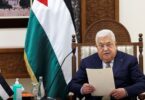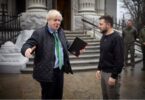Andrew Salmon
North Korean officials walked out of a high-profile inter-Korean liaison office on Friday in the latest sign of Pyongyang anger in the aftermath of the failed North Korea-United States summit in Hanoi last month.
The North notified the South that it was withdrawing its officials under “instructions from higher authorities,” according to a message sent to foreign reporters on Friday afternoon.
However, the North also said “it would not mind the South remaining in the office.”
South Korean Unification Minister Chun Hae-sung said the 25 South Korean government officials based at the office would, indeed, remain there over the weekend, according to Yonhap news agency.
Even so, the ministry said it “regrets the decision of the North to pull out of the liaison office, and urges the North to return soon” in a message sent to foreign reporters.
The two Koreas have no diplomatic relations, so the establishment of an inter-Korean liaison office in Kaesong last September was, arguably, the most substantive deliverable to come out of last year’s inter-Korean engagement process.
That process encompassed such high-profile events and activities as North Korea’s attendance at the PyeongChang Winter Olympics in South Korea, K-pop concerts in Pyongyang, cross-border military agreement, discussion and ceremonies on the re-establishment of cross-border rail links and the three leaders’ summits.
The office in Kaesong, which lies north of Seoul and just north of the DMZ, is the site of an inter-Korean industrial park that was shuttered by the South in 2016 amid inter-Korean tensions.
There were high hopes in Seoul, in advance of last month’s Hanoi summit, that a positive outcome would permit the reopening of the complex.
That appears unlikely as South Korea is beholden to international sanctions – which North Korea, during last month’s North Korea-US summit in Hanoi – asked be lifted.
Since US President Donald Trump and his delegation walked out of that summit after North Korea balked at the “big deal” Washington offered, the North Korean regime has signaled its displeasure with events by holding two press conferences – one in Hanoi, held at midnight on the same day as the summit implosion, and a second in Pyongyang.
Even so, one expert said Friday’s move is, in fact, not as serious as it might appear.
Go Myung-hyun, a North Korea expert at Seoul think tank the Asan Institute, said South Korean President Moon Jae-in is “probably not too concerned” at a move which is “easily reversible” – the departed staff can return at any time.
Go was also convinced that Pyongyang’s ire was aimed not at Seoul, but at Washington, over which it lacks leverage.
“This is signaling the US, rather than South Korea,” he said.”
“Why are they doing this to South Korea? It is for lack of a better alternative. They want to manage provocations at a low level, for now. North Korea can influence the US by either doing nothing – or by launching a missile.”
Given that US President Donald Trump has repeatedly lauded North Korea’s ongoing missile and nuclear test moratorium, Go suggested that the Pyongyang regime was loath to fire off a missile, which could cross a significant red line for the mercurial US president, with whom North Korean leader Kim Jong Un appears to have a mutually respectful relationship.
“It shows they are very upset and might withdraw from dialog,” Go added. “One way to get headlines in the US is to do this.”
Friday’s North Korean action follows reports Wednesday that the US State Department was offering US$6 million for projects aimed at upgrading human rights in North Korea. That news was not likely to be appreciated by Pyongyang amid a now defunct denuclearization process – of which the future is uncertain.
Moreover, the North’s Kaesong walkout comes at a time when hawkish US National Security Advisor John Bolton has been taking an increasingly high-profile role in the Trump administration when it comes to discussing North Korea.






